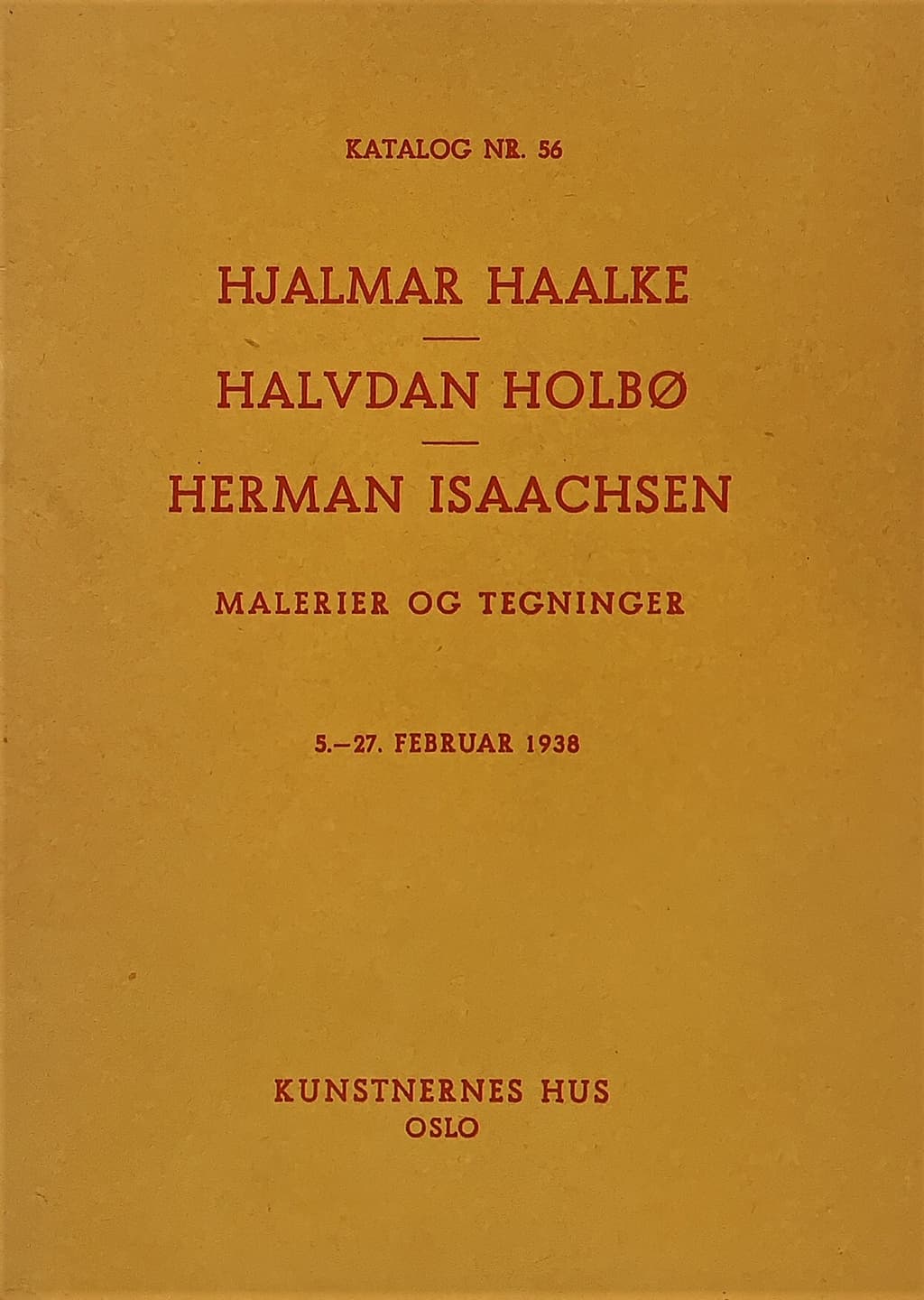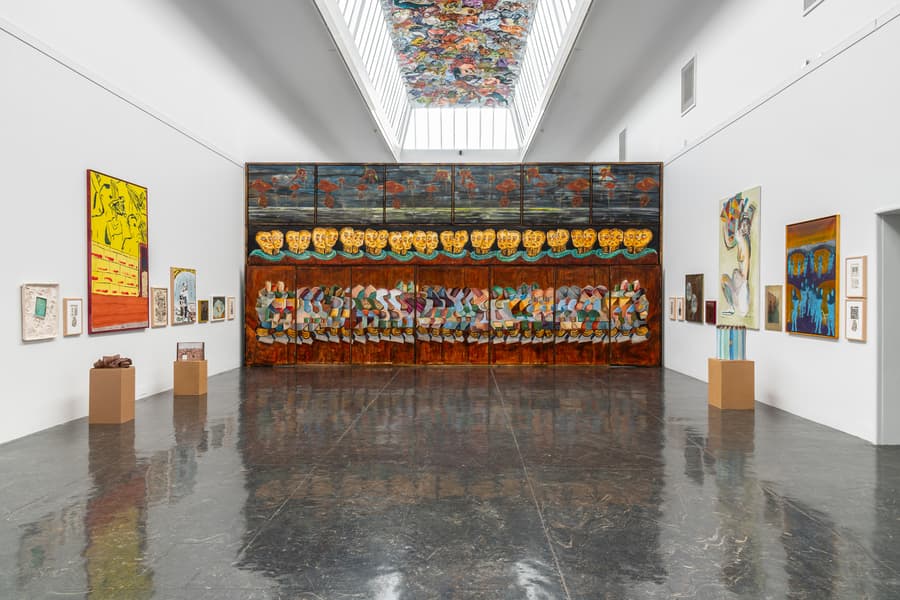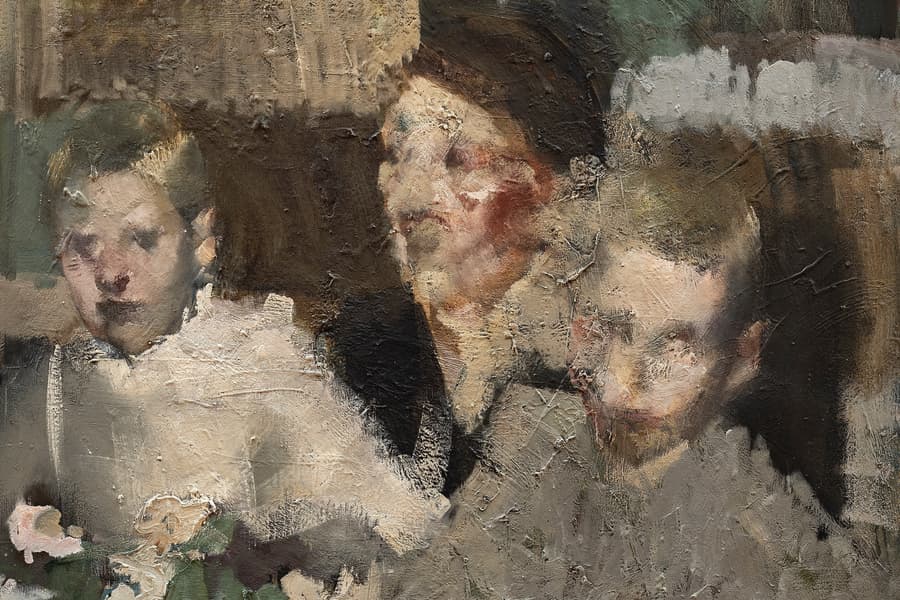Hjalmar Haalke, Halvdan Holbø, Herman Isaachsen

Hjalmar Haalke
Haalke's paintings show a conscious balance between a strong experience of nature and a decorative expression. A number of his depictions of nature, i.a. from Odalen and Vågå, will remain as highlights of post-war Norwegian landscape art.
In addition to landscapes and cityscapes, interiors, still lifes, flower pictures and sterns, Haalke also painted portraits and studio heads. In the portraits, he uses form and color as an expression of the model's personality. The first of four portraits of the wife, painted in Paris 1927, despite the light Parisian attire, has an inherent heaviness in the composition and color tone – light brown with brown-black in the dress and hair – which gives a good characteristic of the model. The sensitive and expressive portrait of the writer Barbra Ring is done in light grey-blue and brown, with the model en face, and is a study of an elderly, perhaps lonely woman.
Halvdan Holbø
Holbø had the great advantage of growing up in an artist's home, where painting was part of life. Already as a high school student, he spent a year in Paris and Italy, and got a first-hand impression of ancient and Renaissance art, while also coming into personal contact with one of French art's leading personalities, Charles Dufresne. Furthermore, he was his father's pupil, and he took part in his father's regular painting trips to mountain villages, hamlets and the high mountains, especially to Vågå. As an artian, he had his first exhibition in his home town, at the same time as he made his debut at the Autumn Exhibition. H. continued in his father's footsteps both in terms of choice of motifs and painterly form of expression, with clear traces of French schooling and color culture. Incidentally, it was the sculptor Rolf Lunde who persuaded the young H. to travel to Paris, and both there and in Italy he met older contemporaries who became important to him. This applies to both Dufresne and the Italian Filippo de Pisis, a significant impressionist. The fact that H. also visited Georg Jacobsen probably says more about the painter's urge for versatile orientation than about a conscious artistic pursuit in the direction of Jacobsen's principles. The Jacobsen episode became a dead end in which H. did not feel comfortable. H. has emphasized coloristic balance and moderation in his painting. The composition is always well considered, he avoids equal angles and he prefers to operate with simple proportions. From 1933, H. has regularly painted in the mountain village in the spring, and here he has created a series of monumental landscapes, where ochre, blue, yellow and chalk varnish dominate. There is no green in these works. From the 1950s, he usually spent the summer by the Oslo Fjord, and the summer pictures from here are dominated by blue and golden tones. H.'s most important efforts lie within landscape painting, although he also, especially in coastal landscapes, works with human figures in the preparation of the compositions. H.'s manner of expression is naturalistic, although he has once tried within the non-figurative idiom: a stone mosaic executed for Sør-Gudbrandsdal Elektrisitetsverk.
H. has carried out a larger altar piece for Sødorp church in Vinstra. He has also painted a number of portraits that reveal great characterisation, human sensitivity and empathy.


